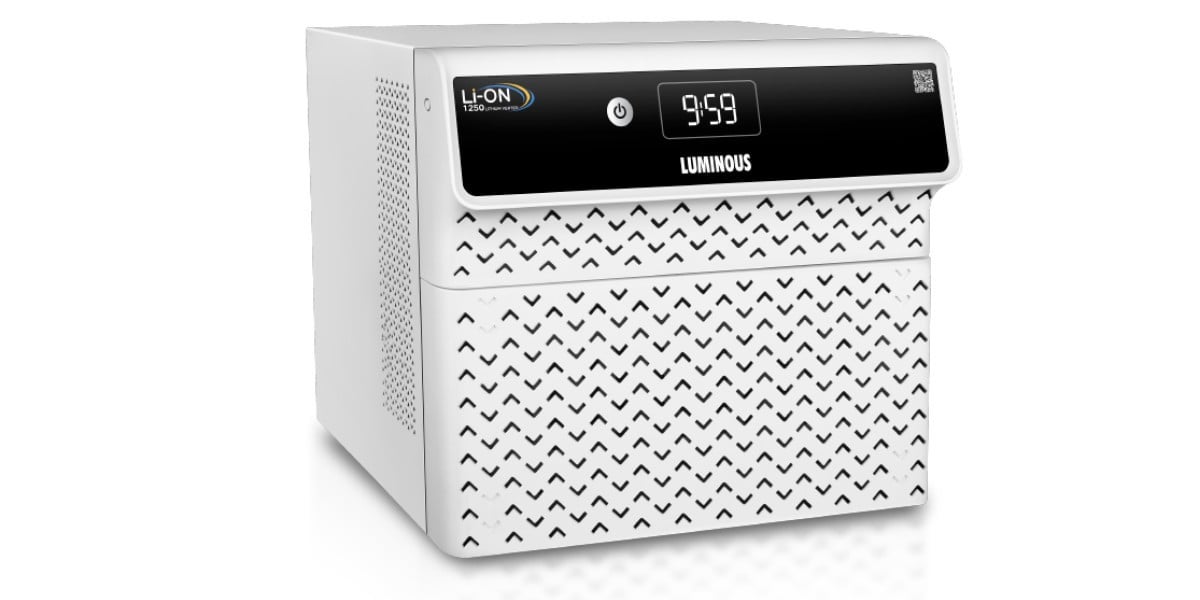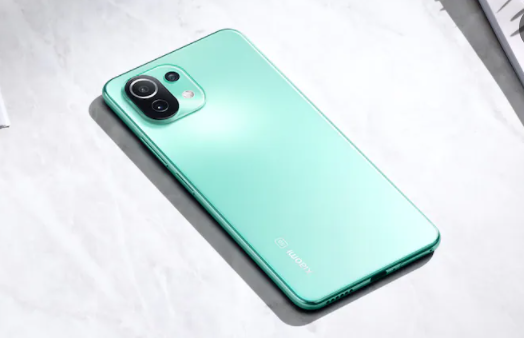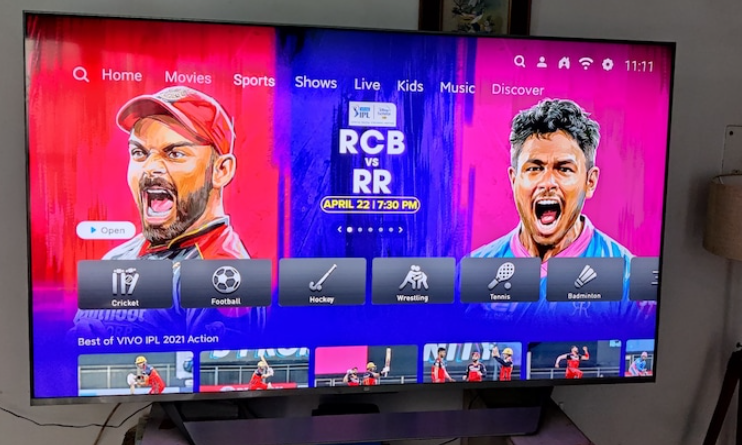Trending Now
- 830 voters names go missing in Kavundampalayam constituency
- If BJP comes to power we shall consider bringing back electoral bonds: Nirmala Sitaraman
- Monitoring at check posts between Kerala and TN intensified as bird flu gets virulent in Kerala
Technology
Best of 2017: Samsung Galaxy Note 8 most premium high-end phone, Xiaomi Redmi 5A best entry-level option
![]() December 30, 2017
December 30, 2017
What an interesting year 2017 has been. Even more so for smartphones. They got bigger, without actually going bigger. They got all the more affordable too. Every price segment, in 2017, saw one or the other company having at least one compelling option for buyers across the board. While we’ve already compiled a list of the top phones of the year, here’s a quick look at the most premium high-end phone of the year, and the best entry-level option which means the most affordable well-rounded phone of them all.
Without further ado, let’s jump in, and find out:
Samsung Galaxy Note 8: Best phone money can buy
The Galaxy Note 8 is more than just another smartphone. It’s a statement. The Galaxy Note 8, the way things turned out for its predecessor the Galaxy Note 7, was hard to conjure for most people. The Galaxy Note 8 wasn’t meant to be, they said, and yet here I am, writing this piece about how Samsung has built the complete package with the new Note. In more ways, than you and I, could have ever imagined. The Galaxy Note 8, is in fact so good, it’s the best smartphone that money can buy at this point of time.
The Galaxy Note 8 picks up right where the infamous Galaxy Note 7 left and infuses it with the company’s current-generation flagship Galaxy S8/Galaxy S8+’ USP Infinity screen, which means, that much like Samsung’s Galaxy S8/Galaxy S8+, the Galaxy Note 8 also comes with an edge-to-edge bezel-less display with an unusual 18.5:9 aspect ratio. There is a subtle difference, however, in that the Galaxy Note 8 is a little less curvy than the Galaxy S8/Galaxy S8+. This is so that users can make best use of the bundled S-Pen’s note-taking capabilities on a relatively flatter surface, according to Samsung.
The Galaxy Note 8 has almost no bezels. The phone gives you almost 83 per cent of screen-to-body ratio. The Galaxy Note 8, because it has almost no bezels, occupies a much smaller footprint — size as well as girth — in comparison to a regular 6-inch phone. The Galaxy Note 8, for your reference, has a 6.3-inch screen with a 2960×1440 pixel (WQHD+) resolution and Super AMOLED panel. The phone also comes with Samsung’s trademark always-on functionality.
In terms of core hardware, the Galaxy Note 8 comes with an octa-core Exynos 8895 64 bit (10nm-based) processor. It further comes with 6 gigs of RAM along with 64GB of internal storage which is also expandable. The dual-SIM phone runs Android 7.1.1 Nougat-based TouchWiz UI — Samsung Experience UX — and supports 4G LTE connectivity. It should get Android Oreo in the days to come.
The Galaxy Note 8 is backed by a 3,300mAh battery and uses USB Type-C for charging and data-syncing. Fast and wireless charging technologies are also supported out-of-the-box. The Galaxy Note 8 is, in addition, IP68 certified for water and dust resistance.
The new S-Pen, that accompanies the Galaxy Note 8, has a 0.7mm rubber tip and a pressure sensitivity level of 4,096 to emulate a real pen-like experience, according to Samsung. The last-generation S-Pen came dangerously close to a ball-point pen now, more than ever and faster and more accurate. It came with some new and improved features like the ability to magnify and translate content straight off the bat. It could also make GIFs out of videos. With the new S-Pen, Samsung has added a couple of more features to it to make it stand out. Not that it needed to. Samsung’s Note is the only compelling option in the market if you’re into a stylus after all.
The S-Pen-Galaxy Note 8 duo’s Screen off memo feature now allows you to jot down up to 100 pages of notes without even powering on your Galaxy Note device. The S-Pen-Galaxy Note 8 duo also allows you to pin these notes on the device’s Always-on display from where you can edit them at will. The S-Pen-Galaxy Note 8 duo — because it can recognize punctuation marks — can also translate entire sentences on the fly now.
A new feature called Live Message, meanwhile, lets you send custom GIFs to your near and dear ones via any messaging service (that supports GIFs).
The S-Pen has always been the main highlight of the Note-series. The Galaxy Note 8 adds one more trait that sets it apart from previous Notes. The Galaxy Note 8 comes with a dual camera system on the rear consisting of two 12-megapixel cameras (wide-angle + telephoto). While one of the 12-megapixel (Dual Pixel) sensor has an f/1.7 aperture and optical image stabilisation, the second 12-megapixel sensor comes with an f/2.4 aperture, again with optical image stabilisation to allow for up to 2X optical zoom (and 10X digital zoom).
The dual camera system, in addition to allowing for wide angle and 2X zoom photos, also comes with a feature called Live Focus that allows for fancy portrait shots, in real time. The Galaxy Note 8 also comes with a Dual Capture mode that allows users to use both the 12MP cameras simultaneously to capture both zoomed-in and wide-angle versions of the same shot, without the need of going back and forth between the two.On the front, the Galaxy Note 8 comes with an 8-megapixel camera with f/1.7 aperture and autofocus.
The list of features, however, doesn’t end there. The Galaxy Note 8, in addition to a rear-mounted fingerprint scanner, also comes with an iris scanner and facial recognition for biometric security. It comes with Samsung Pass to store all your passwords in one place. Samsung Pay is also supported out-of-the-box. Much like the Galaxy S8/Galaxy S8+, the Galaxy Note 8 also supports Samsung DeX to allow users to run supportive mobile apps on a full-scale monitor for enhanced productivity.
Here’s what we said about the Samsung Galaxy Note 8 in our full review :
“The Galaxy Note 8 may be a bigger Galaxy S8+ — with an S-Pen stylus and dual cameras — but in the grand scheme of things, it’s all the more compelling than the Galaxy S8+ and not the other way round. It’s not just the best Note ever, it’s also the best all-round Samsung phone ever. Provided you’re into big screen phones.”
The Galaxy Note 8 is as noteworthy as they come. Then again, it’s not perfect. The Galaxy Note 8 has one flaw, the criticality of which would depend upon how you perceive your ideal smartphone to be. The Galaxy Note 8 has an insanely weird fingerprint scanner. It’s on the back and in a rather awkward position. The whole point of the Galaxy Note 8 — and its USP feature, aka the Infinity display — was to build a phone that was big on paper and smaller in the hands. The Galaxy Note 8 may seem huge on paper but it’s actually quite reassuring when in the hands. All, but the fingerprint scanner.
If you can live with that, the Galaxy Note 8 – at Rs 67,900 – is the best phone that money can buy.
Xiaomi Redmi 5A: Best entry-level phone you can buy
The Redmi 5A, launched by Xiaomi at an introductory price of Rs 4,999, is not a whole lot different from the Redmi 4A. You’ll have to be as observant as Sherlock to pinpoint the differences between the two smartphones. The Redmi 5A, at best, can be considered as a high-definition remaster of the Redmi 4A, launched by Xiaomi to celebrate its fine form: the Chinese brand just joined South Korean giant Samsung to become the number one smartphone vendor in India after all: all in a matter of three years.
Xiaomi is, without a doubt, well at home in India and the Redmi 5A, it says, is a smartphone that it has designed specifically for the Indian consumers. And therein lies the biggest difference that sets the Redmi 5A apart from its predecessor, the Redmi 4A, which was launched by Xiaomi not so long ago. Not only is the Redmi 5A designed for India, it will also be made (assembled) in India.
The made for India aspect also stems from the fact that although the Redmi 5A launched in India shares much of the hardware specs with the Redmi 5A that’s already available in China, the one that will sell (and will be made) in India will come with some India-specific nuggets likely to appeal to India’s masses.
The Redmi 5A India version, for one, comes with a dedicated slot for two nano SIM cards and one micro-SD card for storage expansion. Secondly, Xiaomi has also introduced a 3GB RAM/32GB storage version of the Redmi 5A in India. In China only one 2GB RAM/16GB variant is available. Elsewhere, the Redmi 5A houses the same dual graphite sheet — to save the phone from over-heating — which the company ships inside its premiere phones like the Mi A1, and also includes a power charger that can adapt to India’s fluctuating power scenarios.
The Redmi 5A has been designed for India’s masses according to Xiaomi: it’s an entry-level phone designed for feature phone users looking to make a switch to a smartphone. But just because the Redmi 5A is an entry-level phone, it doesn’t mean that it makes a lot of compromises in terms of hardware specs. In fact, at its price point, the Redmi 5A is the most powerful phone that money can buy, and a build quality to match if not better newly launched phones like the Nokia 2.
The Redmi 5A comes with an all-plastic body — like the Redmi 4A — with a smooth metallic finish on the back and will be available in as many as three colours:Dark Grey, Gold and Rose Gold.
In terms of hardware specs, the Redmi 5A comes with a 5-inch HD IPS display with a 720p resolution. It is powered by a 1.4GHz quad-core Qualcomm Snapdragon 425 processor coupled with Adreno 308 GPU, up to 3GB RAM and up to 32GB of internal memory which is further expandable by up to 128GB via a micro-SD card slot. The dual-SIM phones runs Android Nougat-based MIUI 9 out-of-the-box and supports 4G LTE (VoLTE-ready) connectivity.
On the camera front the Redmi 5A comes with a 13-megapixel camera on the rear with f/2.2 aperture along with Phase Detection Autofocus and an LED flash. On the front you get a 5-megapixel snapper. The phone is backed by a 3,000mAh battery which is non-removable and is claimed to offer up to a whopping 8-days of battery life on stand-by on a single charge.
Here’s what we said about the Xiaomi Redmi 5A in our full review :
“The Redmi 5A is not very different from the Redmi 4A. At the same time additions like dedicated slots for dual-SIM and micro-SD, dual graphite sheet and the ‘Make in India’ adds some variety to it. But more importantly, it’s the price that Xiaomi will be selling its new phone. The Redmi 5A 2GB RAM/16GB storage version at an introductory price of Rs 4,999 is in fact cheaper than what Xiaomi was asking for the Redmi 4A back in the day. It’s quite a steal, is what it is.”
The Xiaomi Redmi 5A offers the best in-class specs for its price segment. It does not ship with a fingerprint scanner though. If you can live with that, the Xiaomi Redmi 5A – starting at Rs 4,999 – is the best entry-level phone that you can buy.
























